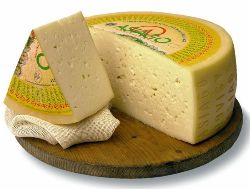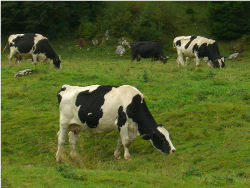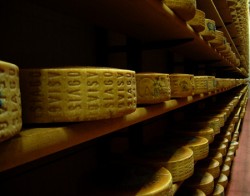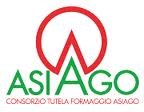from
 |
|
Authentic Asiago DOP cheese is valued for its history and time honored manufacturing process formed during Asiago’s establishment in the year 1000. Although it had been produced for several centuries, it was not until the early 1500’s that Asiago became famous as an important market for cheese. Since that time the production of Asiago cheese has expanded from the Asiago plateau to the upper Po Valley and the mountains of Trento. Today, four provinces encompass Asiago’s zone of production. Acknowledged as officially recognized zones by Italian law, the provinces of Vicenza and Trento and parts of Treviso and Padua provide the land for the collection of milk and the production of cheese. |
 |
|
Seals of Quality: |
 |
Tradition: |
|
cheese is selected from dairy herds with a strict feeding regiment. Once the cows are selected, the cheese makers also inspect the quality of the milk. After the milk has been collected, bovine enzymes are added to stimulate coagulation, usually at a temperature of 104° degrees. As the cheese reaches a thicker consistency the curd is cut and placed in a mold for forming. Next, the curd is worked with repeated cutting, salting and turning. This is an important process in the formation of the cheese that gives Asiago DOP its distinct taste. The curd is then placed in the mould again and pressed for compacting. Shortly after this the presalting operation begins, usually occurring at a temperature of 55-60 degrees for a period of 36-96 hours. Lastly the cheese enters the aging process. During this time the cheese is stored at 55 degrees and 80-85% humidity. Depending on the desired sharpness of the cheese, this period can last anywhere from 20 days to a year. |
|
Nutrition: |
 |
